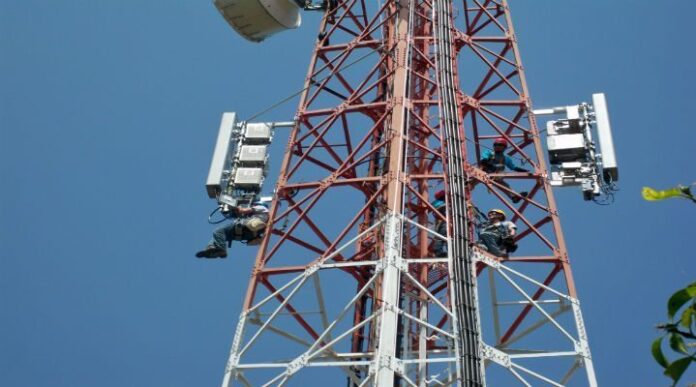Editor’s Note: In an attempt to broaden our interaction with our readers we have created this Reader Forum for those with something meaningful to say to the wireless industry. We want to keep this as open as possible, but we maintain some editorial control to keep it free of commercials or attacks. Please send along submissions for this section to our editors at: dmeyer@rcrwireless.com.
Radio access network technology is evolving at a very rapid pace and across multiple dimensions. Driven by the ongoing, fierce growth in mobile data demand and the need to optimize the usage of precious radio spectrum, network operators are exploring and pursuing a number of options for improving customer experience and increasing coverage.
After the introduction of LTE services in many markets globally, for example, operators have started trialing and commercializing LTE-Advanced features such as carrier aggregation, enhanced inter-cell interference coordination and coordinated multipoint transmission. The evolution of the RAN with its new tools and functions is one challenging and crucial component in striving to maintain or enhance user experience, but it is only one front of innovation.
The connectivity among base stations and to the mobile core also plays a significant role in enabling differentiation of mobile services. Mobile backhaul infrastructures have undergone significant changes with the introduction of Internet protocol-centric mobile network technology and carrier Ethernet connectivity networks. Such networks now need further evolution to efficiently support LTE-A. Centralized RAN was developed as an alternative architecture promising to overcome some of those challenges, particularly around efficiency. In the C-RAN approach, the radio head is located remote from baseband units that are organized in pools with central processing. The corresponding C-RAN connectivity network is referred to as the “fronthaul” network.
Fronthaul is a fundamentally different architecture from the mobile backhaul approach that has been widely implemented around the world. Both architectures offer their own benefits and drawbacks when it comes to deploying and operating the connectivity network for supporting mobile broadband expansion. Operators today require the flexibility to combine multiple different technologies and concepts — fronthaul and backhaul, microwave and optical, small cells and macro cells resulting in heterogeneous networks that employ different mobile technologies within the same zone — to meet the range of needs they today face.
Mobile backhaul
Packet-based mobile backhaul is an established concept with sophisticated service offerings deployed over fiber, copper and microwave for network infrastructure interconnecting base stations and the mobile core. Following the IP-centric architecture of LTE and LTE-A, backhaul has matured into a well-known environment with well-understood performance criteria — efficient bandwidth usage and transport of user data with little overhead — for mobile broadband connectivity.
Mobile backhaul, however, invites additional complexity when extending to public-access small cells and hetnets. With the need to reach many more sites of varying capacity needs, hetnets lend themselves to a less hierarchical network design. In cases such as these, any-to-any connectivity becomes critically important. Plus, real-time connectivity at the lowest latency is a requirement for inter-cell coordination, efficient hand-off and carrier aggregation spanning multiple base stations.
The requirement for phase synchronous operation of base stations entails significant additional complexity, and relying on GPS is insufficient. Availability is an issue, and there is a lack of experience with network-based timing over installed networks.
Mobile fronthaul
The mobile fronthaul approach via C-RAN connectivity is a compelling option in this regard. Minimizing active equipment in an outdoor environment will reduce cost for temperature hardening and lower power consumption. Pooling of baseband units at a central site supports tight cell coupling. This is a prerequisite for efficient use of interference coordination schemes introduced with LTE-A.
Fronthaul eliminates the requirement for timing distribution to phase-align base stations, because processing interference management and inter-cell coordination are provided locally at the baseband unit pool. Only those pools need to be synchronized with one other. The resulting performance of coordination techniques is higher due to the fact that zero latency is introduced when such processing is achieved centrally. Also, there is no need for direct communication among remote radio heads, when the coordination is all performed in the baseband unit pool.
While all of this sounds promising, there are also challenges to be confronted with the fronthaul approach. As network operators know only too well, nothing comes for free.
For example, capacity needs are significantly higher in the fronthaul infrastructure than in backhaul, because it is a digitized radio interface. Multiple gigabits per second instead of a few hundred megabits per second is being transported. Also, very little latency and latency variation can be tolerated. For reasons such as these, adopting a fronthaul approach demands transport via optical fiber; copper and microwave are incapable of delivering the performance and capacity required. This makes availability of fiber a prerequisite to introducing fronthaul architectures.
Also, in the case of managed services for fronthaul, service assurance is tricky due to the cost-sensitive nature of the fronthaul application. For example, active systems such as wavelength division multiplexing with transponders are not suited well, as they involve too much cost. In addition, a new approach is required to be able to separate faults in fiber infrastructure from faults of the remote radio head.
Conclusion
Mobile network operators continue to face fierce growth in mobile data demand. In striving to migrate from current RAN infrastructures to higher-performance and significantly more efficient mobile broadband networks, operators are creatively combining and matching technologies and techniques to flexibly connect the vast array of macro cells, small cells and remote radio heads across their networks.
Ultimately, backhaul architectures for self-contained small cells and C-RAN, fronthaul approaches figure to co-exist as complementary rather than alternative approaches for operators around the world, as neither is without its drawbacks and particular challenges for certain applications. For example, availability of fiber and low-cost fiber connectivity wholesale services play a central role when it comes to fronthaul C-RAN deployment. Meanwhile, backhaul of small cells traffic is anything but simple — the more coordination that is required among base stations, the more performance the backhaul network and its architecture must deliver.
This means that we are likely to see both architectures in the field for the foreseeable future: C-RAN with fronthaul as the clearly preferred choice in locations such as stadiums, malls and shopping centers; whereas, self-contained base stations with backhaul likely will remain in the leading role for street-level deployment.
Mobile network operators, then, require the flexibility to make strategic choices about which approaches and technologies are right for which environments. In building out their mobile broadband networks, operators need universal, end-to-end connectivity with full service assurance for a future-proof RAN.
Michael Ritter is VP of technical marketing and analyst relations, at ADVA Optical Networking where he helps to drive the company’s technology portfolio. Assessing current technology architectures while keeping an eye on the network trends of the future, Ritter helps to effectively position the company.


